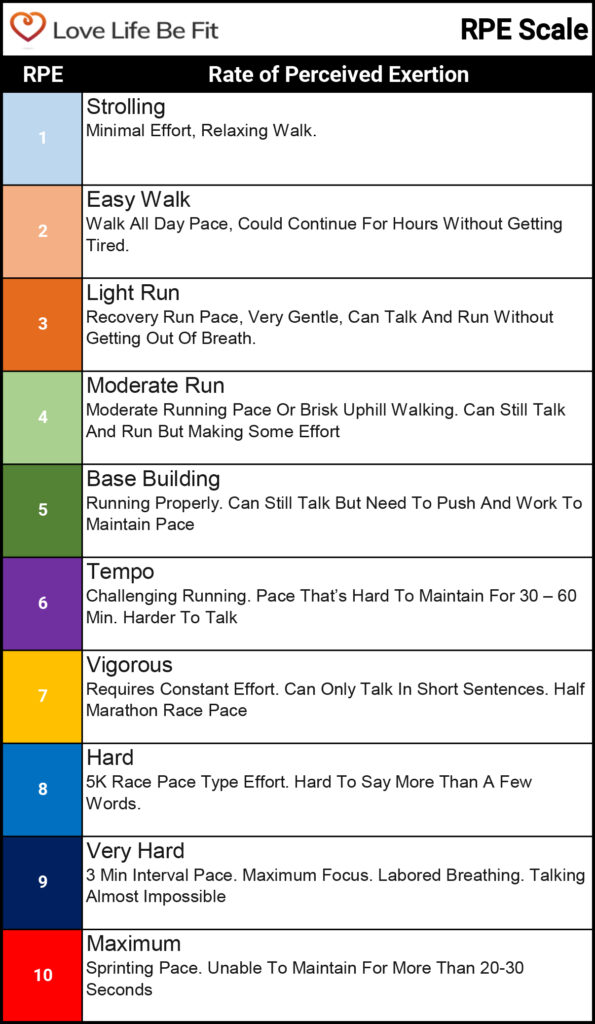How To Run Without Getting Tired (Go Longer Running Tips)
It’s the holy grail for runners – how to run without getting tired. To effortlessly run longer, clocking up mile after mile without shortness of breath or showing signs of obvious fatigue.
How do some runners manage to make it look so easy? When you’re new to running it can seem hard enough just running around the block!
Even experienced runners can hit an impasse when trying to increase distance. Being in good shape isn’t enough.
Tackling a 5K, 10K, half marathon or a marathon for the first time, or even an ultramarathon race, will see a lot of athletes come unstuck, struggling through the final miles with legs of lead.

Best Tips For How To Run Without Getting Tired
- Pace yourself. Many beginner runners set off too fast, especially in a race. Your pace needs to reflect the distance you’re trying to run. That first mile should feel slow!
- Prepare. Take care of your body. Warm up, fuel properly, eat enough carbs both before and during your run, and stay hydrated.
- Train. Becoming a stronger, faster runner makes you able to run longer distances at a slower pace.
- Build your mental strength.
This post explores what stops you from being able to run without getting tired including:
- Why do people get tired when running?
- Training techniques to run for longer without getting tired.
- Practical tips to not get tired when running.
Want to know more about how not to get tired when running? Let’s dive in!

Why Do People Get Tired When Running?
There are 3 main areas affecting your running performance and your ability to run longer without getting tired:
#1 Your ability and running stamina.
A good training plan will make you a stronger runner, with better running endurance, and able to run for longer with proper running form.
From beginner to half marathon training plans, find a plan that matches your target distance and train consistently.
- Couch to 5K
- 5K to 10K
- Couch to Half Marathon
- Your first Ultramarathon
If you’re struggling to run longer it could be because you’re skipping important training sessions.
#2 The type of workout you’re running.
HIIT sessions, interval training, and tempo runs are fast-paced challenging sessions making runners tire quickly. If you want to run long you need to run slow – your pace should match the distance you’re trying to cover.
#3 Your current condition.
Wondering “Why do I get tired so easily on runs?”
Did you have a bad day at work or how well did you sleep last night? Everything affecting your physical and mental health will impact your running.
If you have heavy legs when running, these could be some of the reasons:
Lack of sleep
Getting enough sleep is so important when you’re a runner. Sleep deprivation has a big impact on running performance.
Most adults need 6-8 hours sleep per night so stop trying to burn a candle at both ends!
Poor nutrition
A heavily processed diet can place poor nutrition stress on your body. It’s like running an engine without proper fuel and will affect your physical performance.
You need to look after your body properly if you want to be a good runner.
If you’re a healthy eater and you still feel tired when running, get your doctor to check your iron levels. Iron deficiency is very common – especially in young women. It’s quickly solved but left unchecked will impact your health and your running.
Adequate recovery time
So many runners fail to allow adequate time for recovery and muscle repair between training sessions. Those tired legs need a rest day!
Don’t expect to run longer if your legs are tired before you set off! Rest days are important.
Stress and anxiety levels
Sometimes you just have to accept that there’s too much going on in your life. Stress and anxiety will affect your running.
Although running is good for your mental health, when you’re going through a difficult period you may need to reduce your training. Go for shorter easy runs until life gets better.
How To Run For Longer
Running longer starts with your running pace:
Training Techniques To Run Longer Without Getting Tired
Most of us have an instinctive running pace. Mine just happens to be slow. This makes me great at long distances and I’ve always had good running endurance, but you’d have to stick a very hungry bear behind me to make me set off running at a sprint.
When it comes to running further, slow is good. But if you’re a good sprinter, with an abundance of fast-twitch muscle fibers, it can be hard to find the right pace when you run.
That’s why so many runners end up out of breath and exhausted after just a few blocks. It’s not always a lack of fitness or running ability – they’re running too fast.
Finding the right pace takes practice, for experienced runners and beginners alike. Too slow and you can reach the end of a long run or race thinking you’ve left too much in the tank. Too fast and you risk not making it to the finish line.
Don’t Start Out Too Hard If You Want To Run Longer
Back in 1982, Gunner Borg came up with a Rating of Perceived Exertion Scale. Over the years this has been tweaked and modified by runners to provide a quick and easy guide to pace setting.
This RPE Chart is the best way to match how you feel running to the appropriate effort for the distance you’re trying to run. It’s a good tool for any training plan.

Warm up at RPE 3 – it’s just a light run. Running at your 5K race pace? You’re aiming for level 8 on the RPE scale. It’s a very challenging pace and you’ll struggle to say more than a few words.
Clocking up miles training for a half marathon? Around 80% of your training will be in the RPE 5 to 6 zone. You can chat away as you run, it’s a conversational pace, but you’re making some effort or pushing to maintain your pace.
Make RPE part of your training plan. Know your target level of perceived exertion before you start running. It will help you to slow down at the start of your run and run at a pace you can maintain over a longer distance.

8 Practical Tips To Not Get Tired When Running
#1 Preparation Is Key For Longer Runs
Don’t expect to jump out of bed, swig a mouthful of tea and pull a long run out of the bag. Longer runs take some planning and preparation. You may pull off a half marathon with little training but for longer distances, you need a training plan.
Equally, don’t set off on a 10-mile run when your longest run in the last few months was just 5K. It’s just asking for trouble!
Injury is the ugly side of running. Suddenly increasing the length of your long run is never a good idea. A good rule of thumb is to increase the distance of your longest runs by no more than 10% per week.
#2 Fuel Your Body If You Want To Run Longer
Low-carb diets are for the gym. Trying to run on a low-carb diet is like setting off on a car journey with your tank on empty. You need a balanced diet and carbs are your friends.
Yes, there will always be exceptions. There are endurance athletes who manage to fat burn their way around races – but these athletes tend to be the elite. Runners who’ve put in considerable time and effort to adapt their bodies to fat-burning.
The science is at best incomplete.
You may be running to lose weight, but setting off on a long run without the fuel your body needs will just be a miserable experience.
If you’re running in the morning, eat a good breakfast before you set off. If your long run is more than 60 – 90 minutes, take some fuel with you. Gels, jelly babies, dried fruit… quick carbs you can easily digest.
As a rule of thumb, after the first hour of running aim to consume 1g of carbs per hour for every 1kg of body weight. For me, that’s about 3 gels and I try and space them out at 20-minute intervals.
Don’t forget to refuel after a long or demanding run. I find peanut butter sandwiches make a great post run treat!
By all means, experiment in training and find your sweet spot for fuelling. As a younger athlete, I could get away with less. These days, especially when I’ve got my race face on, I’m locked and loaded with my gels.
#3 Stay Hydrated
Dehydration can seriously affect your running performance. The consequences can go from missing out on a PB to ending up flat on your back with a drip stuck in your arm.
It’s not just when you’re running in the heat that you need to think about hydration. Even on cool, cloudy days dehydration can stop you from running at your best.
The best tip is to start hydrating early. This doesn’t mean over-drinking. All runners should be aware of the dangers of water intoxication where runners put themselves in danger from drinking too much water during an event.
Instead of drinking to excess, the aim is to drink to thirst. Just be aware of your thirst during a long run or race and drink accordingly.
I’ve found over the years that what I drink the day before a long run is important. We all lead busy lives and it’s easy to neglect thirst.
Check in with your body and be aware of what you’re drinking in the days leading up to a longer run. Drink adequate fluids before you set off and start taking sips of fluid early on.
There’s no one-size-fits-all when it comes to hydration so experiment during your training runs. For runs over one hour, use an electrolyte mix (sports drink) to maintain your sodium balance.
Hot weather can throw even experienced runners into jeopardy. A friend recently timed out on Day 1 of the multi-day Dragon’s Back Race.
Despite his immense experience in running ultra races, an unexpected heatwave left him dehydrated and vomiting for several hours. The lesson – when it’s hot, slow down and drink more.
#4 Warm Up – To Run Longer Without Getting Tired
Race organizers seem to love a spectacle. So often I’ve been in races where everyone is encouraged to set off at a sprint.
You’ll pay for it later.
Nail your warm-up routine. Use running drills and dynamic stretches to warm up your muscles and improve your range of motion. Avoid setting off too fast on race day.
Instead, know your target pace and stick to it. A great way is to start at the back of a long race, in control of your pace, and spend your long race taking scalps as you move up through the field.
Set off too fast and you’ll pay for it with heavy legs a few miles into your long run.

#5 Training – The Need For Speed When Running Longer
This seems a contradiction. You want to pace yourself and start slow to run further. But you also need to be able to run fast.
Why?
Because it’s impossible to run long distances at your maximum pace. You need something in the bag. To run well within your capabilities.
The key to how to run longer without getting tired is easy-paced running. You need to run at a pace you can maintain over a long distance.
That should be a lot slower than your pace over one mile or even your 5 or 10-km pace.
But to slow down you need to be capable of fast-paced running in the first place.
If you do all your training as easy runs at a slow easy pace, this will be your maximum pace. You’ll have no reserve or running endurance. When the distance gets tough, you’ll be reduced to walking or stopping.
Adding more challenging training sessions such as intervals and tempo runs to your training plan will improve your fitness level and make your easy long-distance pace seem easier. But always build fast-paced running gradually.
A typical interval training session will depend on goals and the distance you’re aiming for. Intervals tend to be longer the further your goal.
For example, a sample interval training workout for marathon training is the Yasso 800m workout. Named after Bart Yasso, it’s a tough 10 x 800m session with short recovery periods. It’s not a good idea for your first ever session!
Your first interval session should leave you with more in the tank. It’s easy to overdo hard runs and end up with an injury.
Get it right and fast-paced sessions will make you a stronger runner. More resilient to the effort it takes to run longer without getting tired.
Related post: How to run a mile faster.
#6 Strength Train
Running further is punishing for the body. As you get tired you lose running form. When you lose proper form your running becomes harder and slower. Those legs are tired!
That’s why strength training should be part of all runners’ preparation. A stronger body will cope better with longer distances. It helps you avoid the injuries that often plague runners in training.
Interval training for speed will also help with your strength, but you can up the ante with hill sessions. You don’t need to live in the mountains to do this, running up flights of steps can be just as effective. (Channeling your inner Rocky).
You can hit the gym to get stronger but it’s important to target the right muscles which will help your running. Too much muscle bulk will just slow you down. Get some running-specific advice or follow these exercises you can do at home.
#7 Build Time And Distance
Running endurance training is about time on your feet. It’s not necessarily about distance.
By all means, if you want to run longer without getting tired, you need to be gradually building the furthest distance of your weekly long run and your weekly mileage. Increase distance slowly by no more than 10% per week.
But it’s not just about distance. If you’re training for a really long race, it can help to add walk breaks to your long run where you take a walk break in between easy running and the aim is to be out for your target race time.
Here the duration of your long run is the important thing. Just make sure this isn’t in the two weeks before your race and you have plenty of time to recover.
There’s a misguided view that to run, for example, a marathon, your longest run in the build-up needs to be almost the same distance.
Often marathon runners will wear themselves out before the big day with excessive long runs of 22+ miles.
Take it from someone who’s run their best marathon time off 10-mile training runs that this isn’t necessary. If you’re a strong runner and you’ve worked on your speed, you’ll be able to pull those extra miles out of the bag on your big day.
#8 Work On Your Mental Strength To Run Longer
Some long distance runners are capable of covering massive distances, even in monotonous conditions, because of their mental strength. This is something you can train. It’s an often neglected part of how to run longer without getting tired.
I don’t mean you need to sign up for a backyard ultra, although it may help. Instead, there are techniques you can use to help you stick to running longer, improving both your physical and mental stamina.
Visualization
Imagine yourself completing the route. Think about different scenarios of what might go wrong and how you will overcome them. There is no such thing as a perfect race, especially when it’s a long one. So if you’re mentally prepared it will help you overcome difficulties on the day.
Break The Distance Into Stages
It’s your run so you get to decide how long each stage is. For example, a marathon could be 42 x 1km stages, 26 x 1-mile stages, or maybe 14 feed stations.
As you run you focus on completing a stage rather than become overwhelmed with completing the entire distance. You complete your current stage in the best possible manner – at your pre-planned pace with optimal fuelling.
When you complete a stage, give yourself a psychological pat on the back and focus on the next stage. Each new stage is a fresh start.
Focus On Your Running
It’s easy to let your mind wander when you run long distances. That’s okay when you’re clocking up training miles. When you’re racing, keep pulling your mind back to concentrate on your running.
Otherwise, you can lose your pace, miss directions from marshalls, or make errors if it’s a race where you need to navigate.
Some people prefer to run with music, (and some believe they can only run with music). If you can run safely with music, without losing focus that’s fine. But it’s worth experimenting and trying to run without. Just look at the pros. They might be using music as they warm up but the headphones are packed away when they start to race.
Be Aware Of False Signals
A good runner will consistently listen to their body. Drink when they feel thirsty, slow down when it’s hot… But be aware of false signals when you’re running.
Your mind can play tricks on you.
Sometimes that niggle in the first few miles is in your imagination. In the last few miles, your mind may be screaming stop because you’re tired. It doesn’t mean you can’t hang in there and make it to the end of your run.
By all means, take action when you have signs of injury, it takes mental strength to pull out of a race and leave the fight for another day.
Just don’t let your mind end a fight without good reason.
Putting It All Together To Run Longer
Some people adapt to running further with ease. For others, it’s a hard slog. It’s not essential to run long distances. Running shorter distances can be better for your body and short, fast races are a lot of fun.
Be patient if you want to run further and take your running to the next level. Everyone has bad days and there’s always the next time. As the months and years go by you’ll build your runner’s body and running will become easier.
Just remember to be consistent. It’s sticking to a training plan that will get you to where you want to be – able to run longer without getting tired.







